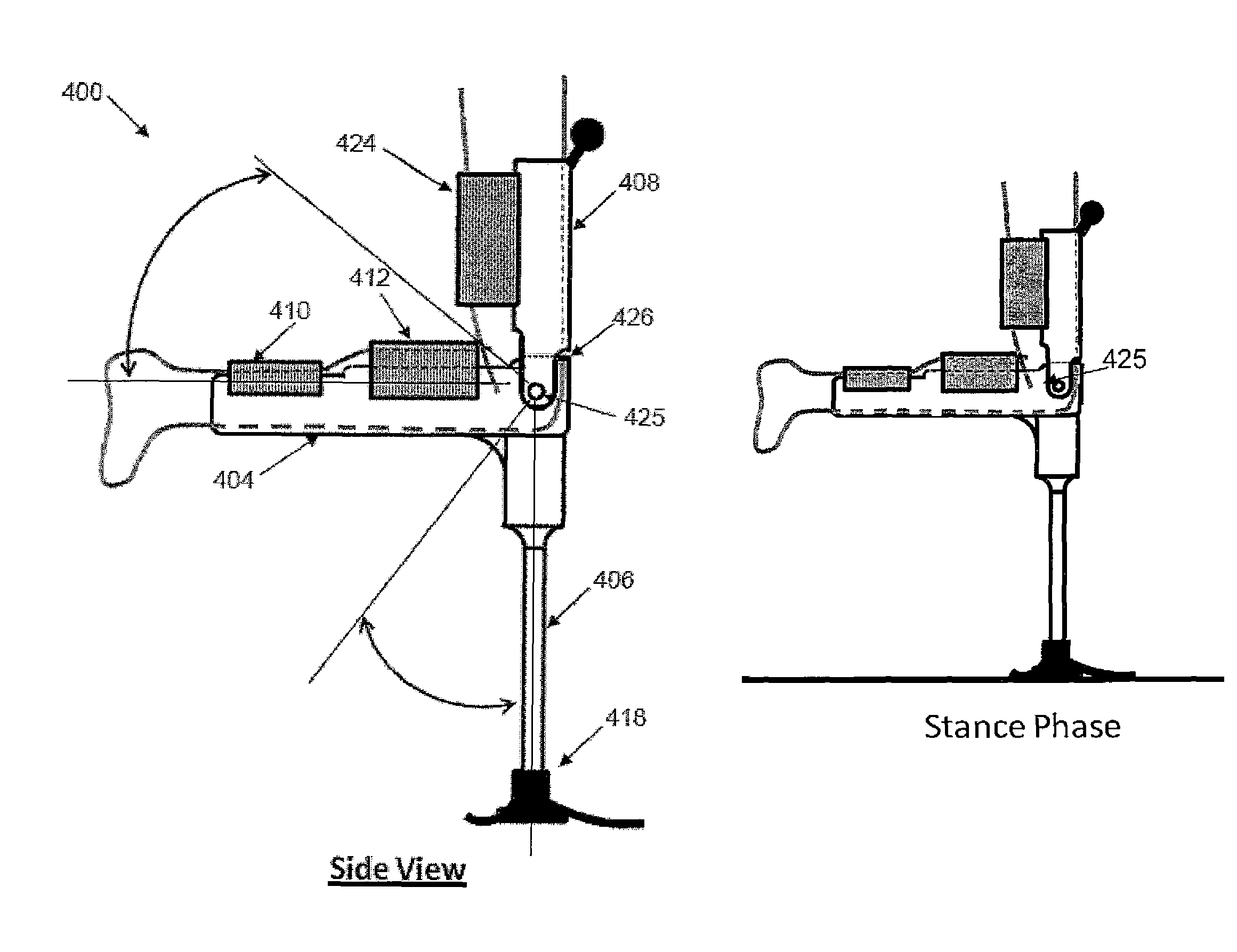Limb prosthesis
a technology for prosthetics and legs, applied in the field of limb prosthesis, can solve the problems of skin irritation and pain at the contact point between the crutch and the user, difficulty in ambulation for the sufferer, and permanent loss of use of the lower limb,
- Summary
- Abstract
- Description
- Claims
- Application Information
AI Technical Summary
Benefits of technology
Problems solved by technology
Method used
Image
Examples
Embodiment Construction
[0031]Reference will now be made in detail to various embodiments of the invention, one or more examples of which are set forth below. Each embodiment is provided by way of explanation of the invention, not limitation of the invention. In fact, it will be apparent to those skilled in the art that various modifications and variations may be made in the present invention without departing from the scope or spirit of the invention. For instance, features illustrated or described as part of one embodiment, may be used in another embodiment to yield a still further embodiment.
[0032]Disclosed herein are limb prostheses for use due to a lower leg injury, amputation, or disease. The limb prostheses can be utilized temporarily, for instance during rehabilitation, or can be used permanently, as in the case of amputation. Disclosed prostheses provide full body weight support and allow a wearer to maintain the use of their hands and arms. In addition, a wearer can maintain use of his / her own kn...
PUM
 Login to View More
Login to View More Abstract
Description
Claims
Application Information
 Login to View More
Login to View More - R&D
- Intellectual Property
- Life Sciences
- Materials
- Tech Scout
- Unparalleled Data Quality
- Higher Quality Content
- 60% Fewer Hallucinations
Browse by: Latest US Patents, China's latest patents, Technical Efficacy Thesaurus, Application Domain, Technology Topic, Popular Technical Reports.
© 2025 PatSnap. All rights reserved.Legal|Privacy policy|Modern Slavery Act Transparency Statement|Sitemap|About US| Contact US: help@patsnap.com



